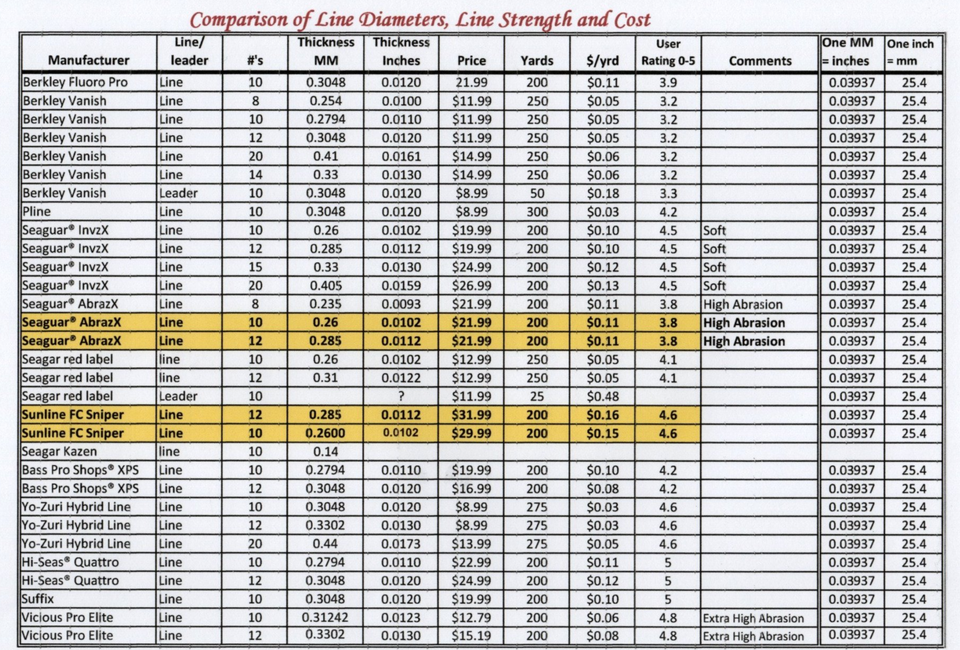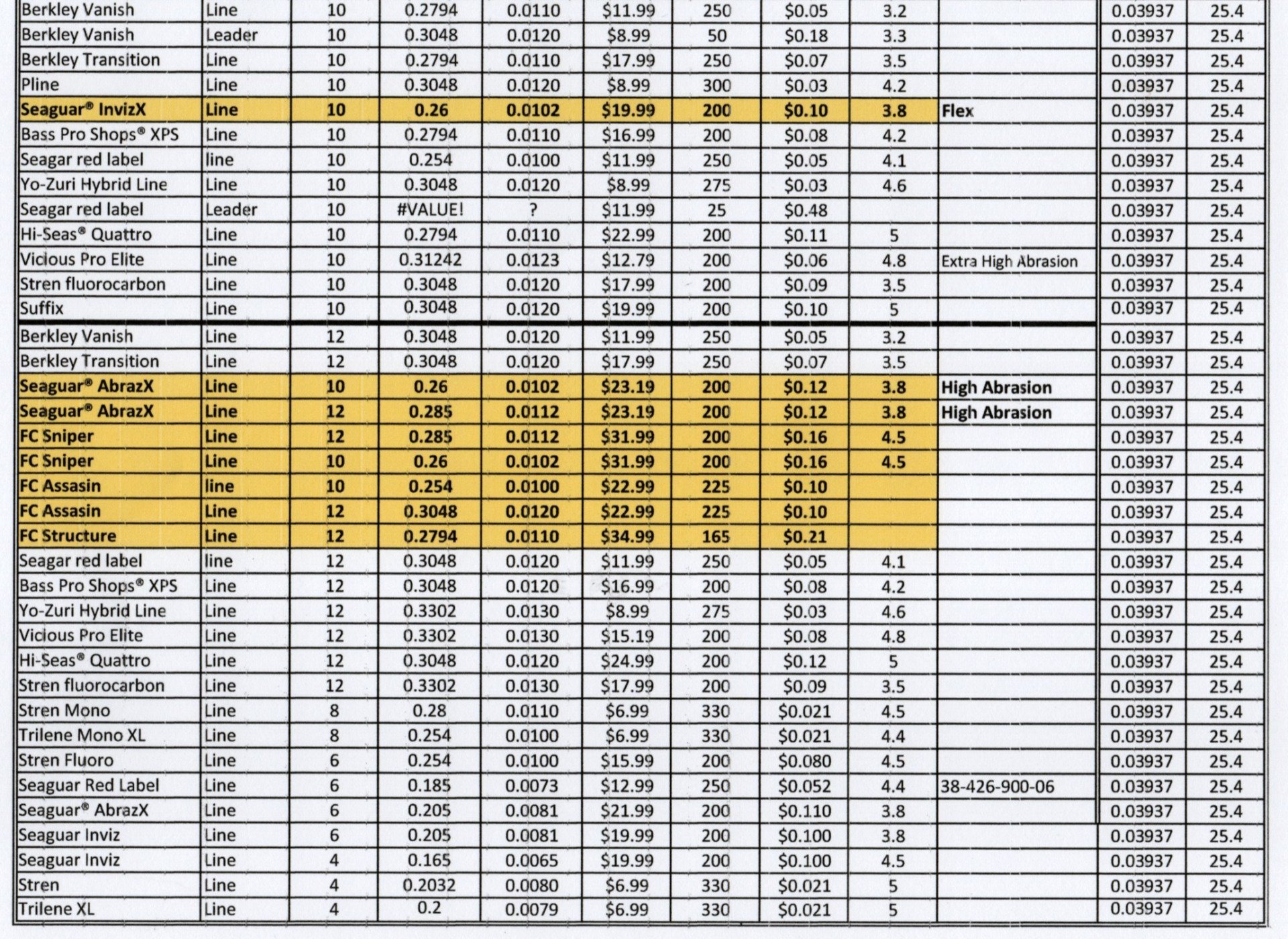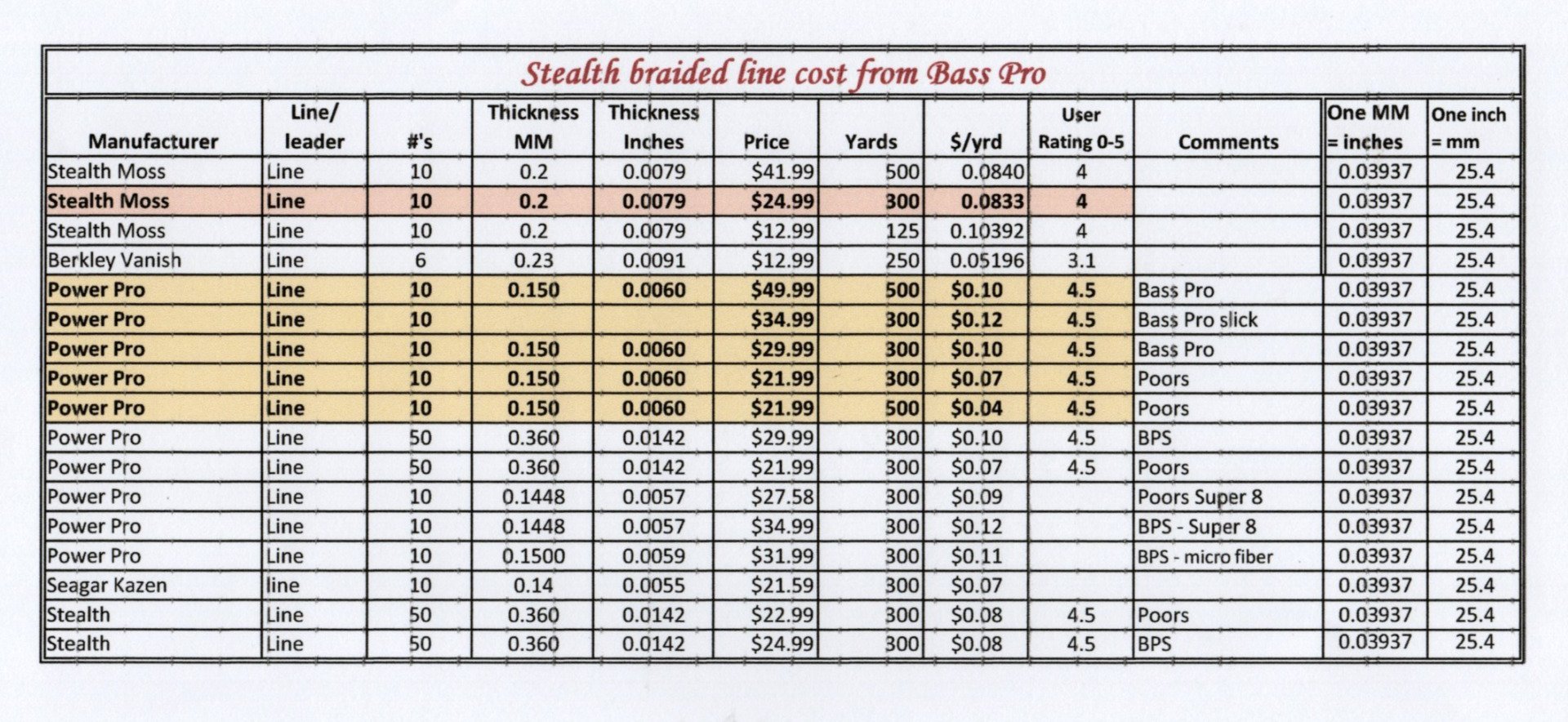Welcome To Reid's Bass Beginnings
Fluorocarbon Leader Tying to Braided Line
The reason a fluorocarbon leader is used with a braided main line is to reduce the chance of the fish seeing the line and "shying away" from your lure. In relatively clear water, the use of a fluorocarbon leader can improve the number of strikes since it is harder to see underwater than braided or monofilament line. The reason I use braided main line for some fishing rather than a mono or fluorocarbon main line is that braided can last a couple of seasons, casts better and has less stretch (greater sensitivity to feel a strike) than fluorocarbon or monofilament line. Low stretch and high sensitivity are great line characteristics to have when fishing plastic worms and other soft plastic lures. However there are many other techniques/situations where a braided line and a leader are not the best way to go. In general, if you don't need a leader (if your fishing in very stained water or heavy cover) don't use it since the extra knot is just another point in your line that can break. Also note that when using braided line as the main line always use a monofilament backing on the reel or the braided line will spin on the reel spool. The mono backing only has to be a few turns on the spool.
There are numerous braided line and leader line combinations to choose from depending on the type of cover you are fishing, the lure being used and the technique is being used. This leader and line discussion is limited to bass fishing using soft plastic baits (such as worms) in relatively open water (i.e. not fishing heavy vegetation such as lily pads or wooded cover). For plastic worm fishing in relatively clear open water I generally use spinning tackle with 10lb braided main line and a fluorocarbon leader. I tie the leader line directly to the braided main line using a "Double Uni Knot". Click on http://www.netknots.com/html/fishing_knots.html to learn how to tie a Double Uni Knot and many other knots. The problem with using a leader is the knot. The weakest point in the line is the knot. When using a leader there will be three knots tied in your line. Two for the leader (One for the braided main line and one for the leader) and one for the terminal tackle (usually a hook). In my experience the leader line knot tied to the braided line is weaker than the knot tied to the terminal hook. Nothing frustrates me more than having a leader knot break when fighting a fish.
In 2011 I found a fluorocarbon line to use as a leader which minimizes leader line knot failures (Click here to see below chart with line highlighted in yellow). The line is Seagar Abraz X 12lb test (click http://www.seaguar.com/products/abrazx.htm ). It is relatively expensive but one spool should easily last a weekend fisherman all year. I did try several other fluorocarbon line manufactures but I found that I get more leader knot breaks than with the Seagar Abraz X. In general I want to use the smallest diameter leader line as possible to increase my strikes. However using less than a 10lb leader on 10lb braided main line results in many breakoffs at the leader knot. I reviewed several manufacturer's line diameters and found that the Segar 12lb test has the same line diameter as the other manufactures 10lb test lines (see chart below). Also Seagar makes a high abrasion line which I think is important when using a leader. I believe that pulling the leader line knot through the rod eyes when casting is stressful on the knot. You can put a very short leader (about a foot) on the line and never pull it though a rod eye when casting but I also like to have a little longer leader to reduce the chance of fish "line shying" and to give a little extra to retie the hook knot when needed. In summary, during 2011 I used 12 lb Seagar AbrazX fluorocarbon line as a leader on 10lb braided line when fishing Bass in relatively clear open water.
As of Spring 2012, I have changed from a 12 lb to a 10 lb Seagar AbraxX fluorocarbon leader. I've changed under the assumption that the smaller diameter 10 lb line is harder to see and could result in more strikes. My main concern is will I have more leader to main line knot breaks using the lighter 10 lb leader. As you can see in this web site section titled "Season's Catches" I have caught more fish per hour than in previous years. Although catch rate has many more variables than just the leader line diameter it is a positive result. Furthermore, my primary concern of leader to main line knot failure has NOT occurred. Therefore I intend to keep using the 10 lb Seagar AbrazX line as my fluorocarbon leader.


